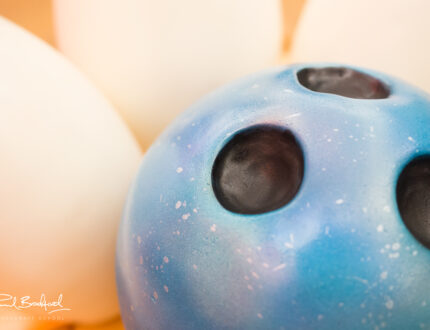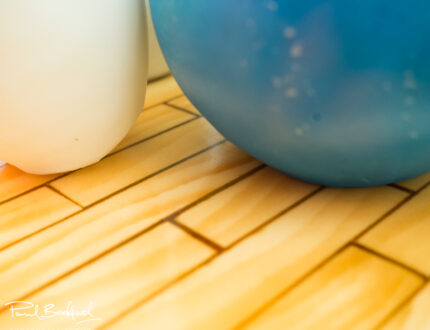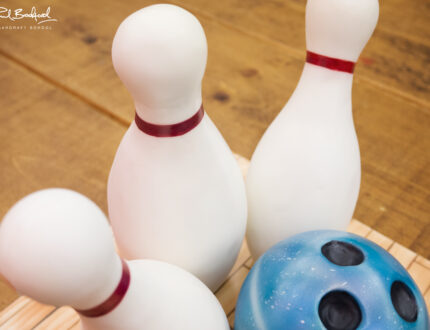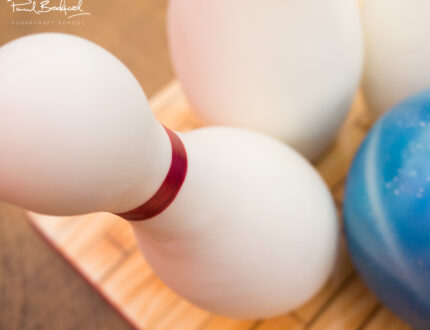Tutorial Preview
Highlights
In this video we show you all the key points from this tutorial condensed into a 15 mins lesson that should be more than enough to get you started.
1. Preparing the Design
In this lesson Dawn talks us through her design and how she has planned it around her 14” base. You can purchase cake frame kits here. There is enough in the starter kit to get you started but you will need to buy a couple of extras which are also listed in the Tools sections. make this cake but just bare in mind not to ice the base until everything else is made. Dawn uses the 10” round platform from the starter kit to make all her cakes on and then transfers them to the iced 14” Square platform when finishing the design.
2. Covering the Board
Dawn uses 750g of Ivory coloured sugarpaste by Massa Ticino which has a strong reputation for not cracking or tearing no matter how thin it is rolled. It is a little bit more expensive and doesn’t have to be used for this cake so feel free to use whatever you like. Dawn first paints on some piping gel onto the platform to allow the sugarpaste to stick and then cuts away the excess as you would normally. Once you have done this all you need to do is cut away the circles to reveal the holes in the platform using a circle cutter.
3. Adding Wood Grain Effect
In this lesson Dawn shows us how to get a fantastic wood grain effect using only an airbrush, masking tape and a bit of paper. First of all she cuts up different lengths of masking tape and places it along the board. When doing this make sure that none of the pieces are touching as you will be spraying to reveal the lines in between the tape. Make sure they are truly stuck down as well as the paint can go under them. Once you have place all the pieces down get your brown airbrush paint and focus on the lines between the masking tape but not spraying too much to avoid saturating the tape. Allow them to dry a bit and then peel them off and you can carefully use a sharp knife to do this. Now get a piece of paper and tear it allowing it to tear however it does naturally. Hold this paper along the strips of untouched paste and spray on the edge of the paper repeatedly making sure the lines created do not touch.
4. Making Rice Krispie Treats
Half a bag of large marshmallow, a bag of rice krispies and a teaspoon of butter and you are all set. Remember and place the marshmallow in first and the butter in last. This is important as you want the marshmallows to be covered as they expand when microwaved and if they are on top it can create a lot of mess.They only need to be heated for approx a 30 seconds. Keep an eye on them! Once they done simply give them a good mix with a metal spoon and then put them in the fridge.
5. Making the Bowling Pins Pt 1
You can find plastic bowling pins on web sites such as amazon and all you need to do is find one that you feel is a good size. Cut it down the middle (be very careful) and then cut away the circular bit at the bottom. Grease the inside slightly as you would a baking tray and then layer it with cling film. Take your rice kirspie treat mix and stuff it into the pin until it takes shape. You can use a cake smoother to really press it down. Once it’s tightly packed and looking good repeat the process and put them both in the freezer until they are solid.
6. Making the Bowling Pins Pt 2
Now that the tasty bowling pins are at room temperature it’s time to start getting the structure ready. It may look confusing but Dawn keeps us right with all the right pieces to use. Once you have all the right pieces joined together it’s simply a case of carving out bits from the centre of the two hals of the rice krispie pins so that they shape around the pieces. Once you have done this simply cover them in a thin layer of soft butter consistency ganache to seal it all together.
7. Making the Bowling Pins Pt 3
A nice easy lesson here where basically Dawn covers the pin in another layer of ganache to help strengthen it and smooth it even further. To finish she uses a bowl of cooled boiled water to completely smooth the ganache with her hands. Messy but satisfying!
8. Covering the Bowling Pin
In this lesson Dawn covers the pin in white sugarpaste. She rolls it out to approx 3mm in thickness and focuses on making it wider at one end so that it wraps nicely around the shape of the pin. Just make sure that you join the sugarpaste underneath the pin where it won’t be seen. Dawn uses a clever technique and uses scissors to cut away the excess sugarpaste as this helps pinch it together. When cutting away the excess at the bottom she uses a knife and advises to make sure that you leave enough to tuck under the cake.
9. Carving the Cake Bowling Pin
Dawn uses 4″ round cakes stacked on top of each other and uses a 4″ round platform in the centre. She carves them to the shape of the pin but this time doesn’t need to cut out the middle as the cake can be pushed over the structure putting a hole all the way through it. You will see that there are large gaps between the cake and the central platform in Dawns pin but as your will have ganache in between each layer you wont have this issue and as well it can be sorted out by using the cut off’s of your cake. For the top of the pin Dawn rolls out a large ball of sugarpaste and and shapes it to form the neck and top of the pin.
10. Ganaching the Cake Bowling Pin
Now that you have had your cake in the fridge and allowed it to firm up it’s time to cover it in tasty ganache. Once again make sure you have it at the consistency of warm butter. Depending on what kind of cake you are using you can get lots of crumbs throughout the ganache if you are not careful. Once it’s all covered put it back in the fridge for 5 minutes and then get a bowl of boiling water ready for smoothing it out as demonstrated earlier.
11. Covering the Cake Bowling Pin
Pretty much the same situation as covering the last bowling pin although a little easier as it’s not at an angle. As you’ll notice Dawn uses her hands to smooth down the sugarpaste as the shape makes it awkward to use cake smoothers but acetate smoothers would work fine.If you have difficulty getting rid of the join use a little bit of water and rub it with your finger until the sugarpaste dissolves ever so slightly and the join should go away.
12. Making the Bowling Ball
If you have a spherical baking tin or a round baking tin and you are confident baking with them then you can skip this lesson unless you want to learn how to carve a circular cake. For the bowling Ball Dawn uses four 6” round cakes on top of each other. Dawn uses a 6” and a 4” circular platform in this lesson to help her carve and she also places the 6” circular platform in the centre of the cake for support. Dawn keeps us right and shows us all the different pieces to use form the cake frame kit to structure it all. When carving the sphere shape try and cut over one layer at a time and don’t make the cuts too big. Once you have a nice shape use your hands to rub the cake and smooth it and shape it further. If you find that the cake is a little flat at the top and bottom you can always use your cutaways and compress them with your hand and use a little ganache to attach it and add volume to the cake to make it more like a sphere.
13. Covering the Bowling Ball
Now that the ball is shaped nicely it’s time to cover it in ganache in the same way as the bowling pins. Once this is done we of course need to cut out three holes. As the cake is so soft dawn uses a ball tool to make the holes and then widens them with her knuckles. She advises that once you have made them to fill them again with a little ganache so that when you cover them and push the sugarpaste in that there is ganache between it and the cake. Once you have covered it with ganache and smoothed it put it in the fridge for 5 – 10 mins and then cover it with sugarpaste about the same thickness as the pins.
14. Airbrushing the Bowling Ball
Now it’s time to finish the bowling ball and give it a funky outer space look. Of course you may want to colour it completely differently but to achieve this look Dawn uses iridescent paints and uses a couple of clever techniques. When it comes to creating the red stripe on the bowling pin Dawn uses masking tape and cling film to map the stripe as well as protect the cake. Just make sure your sugarpaste is dry at this point as the tape can leave dents in the sugarpaste. If you don’t have an airbrush you could always use the same technique but paint it on or even create a thin red strip using sugarpaste.
15. Finishing Touches
First of all Dawn demonstrates just how serious she is when she claims that her clear glaze spray is waterproof. It has to be said that it is quite impressive and certainly takes away the fear of the board being ruined by spillages. She then goes onto to show how it is all put together using the various cake frame parts and it is all very simple and straightforward. Now we can go onto “other ideas” to see what else we can do with Cake Frame.
16. Other Ideas
In this lesson Dawn gives some other ideas as to how this cake frame set up could be used to make various different cakes and it all sounds very exciting. Let your imagination go crazy! We’re sure by now that you have some of your own ideas and we would love to see your version of the 10 Pin Bowling Cake, so please share your snaps with us on our Facebook Page as well as Dawn’s!
17. Pro Lesson
Paul shares some insider information detailing the cost to make the cake as well as what you should charge when selling it – essential information for any professional cake designer!
Dawn Butler from Dinkydoodle Designs introduces us to her fantastic gravity defying Ten Pin Bowling cake, which she has created using the ingenious Cake Frame. This tutorial covers a variety of skills including carving, icing awkward shapes, using a Cake Frame effectively and airbrushing. A great cake for birthdays and fun celebrations, this design takes two half days to make. It is aimed at beginner to intermediate level.





